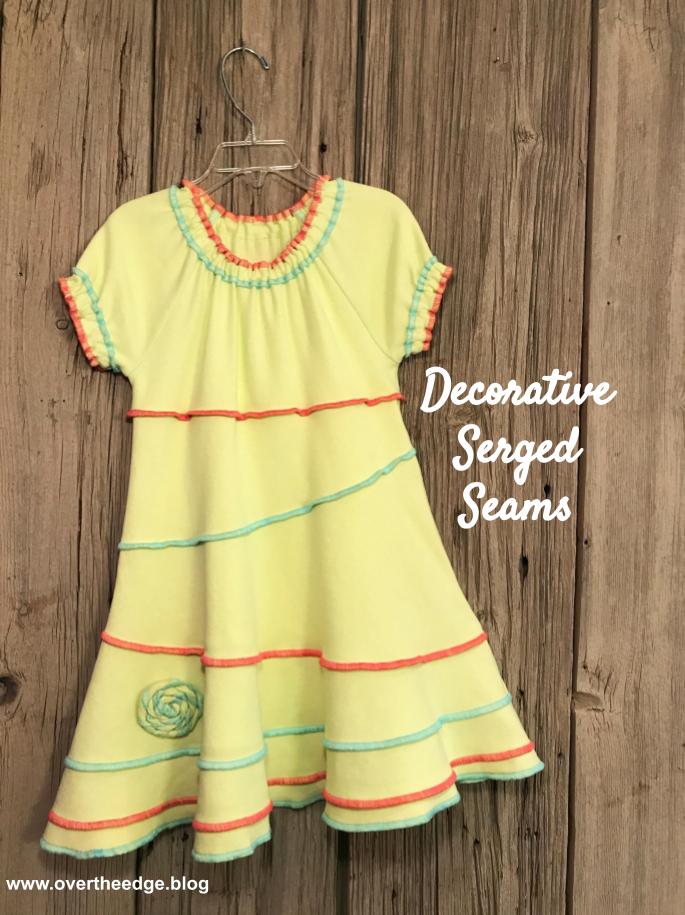Decorative Serged Seams
Adding decorative serged seams to your garments is as easy as serging a seam. Just use pretty thread and serge your pattern pieces wrong sides together so the serged seams become exposed on the right side of the garment!
In recent years the inside-out look has become popular. Exposed serged seams can be found in many ready to wear garments. It’s fun to duplicate that look in garments you make yourself.
I made this cute little girl’s dress with a basic serger, long before I had my Babylock Evolution. The dress was made with a soft cotton interlock knit, a wide three thread overlock stitch and Maxi Lock serger thread. The flared skirt panels are very twirly, perfect for the little girl who likes to twirl! This project is proof that you can make great garments with a basic serger. (However it does take a little more work and time because you have to do more testing of your stitches and spend more time threading.)
The Dress – Kwik Sew Pattern K3944
I made this cute dress many years ago, and so the pattern is now out of print. But I searched the internet and found it still for sale on various sites like Etsy. What I liked about this Kwik Sew pattern (besides the cute dress) was that the instructions were written for a serger. As you can see from the pattern envelope, I pretty much made view A exactly as pictured – similar yellowish green fabric, and pink and blue thread. I used a 3 thread wide overlock stitch for all the exposed and internal seams. The sewing machine was only used for top-stitching the elastic casing on the sleeves and neckline. And I did design my own flower for the skirt, instead of making the one included with the pattern.
Here are a few closeup photos of the stitching.
Notes on Construction
I changed the order of construction to minimize changeovers between the pink and blue thread. I used a shorter than normal stitch length on the exposed seams, making the serger thread more visible. At the time I made this dress I didn’t have any thick decorative thread, so I just used standard serger thread. I did some testing on scraps to determine the best combination of fabric, stitch and thread before beginning the project.
My Flower
I took a long strip of knit and serged both long raw edges with a 3 thread overlock. Then I twisted the strip like you would twist streamer decorations for a party. Then I coiled the strip and glued a piece of fabric to the back to hold it together. I safety pinned it to the dress so it could be removed for washing.

Adding Decorative Serged Seams to Your Garments
I hope you enjoyed my post about adding decorative serged seams to your garments. For another example of decorative serged seams check out my Cozy Sweater Shirt post link below.
Resources
Kwik Sew has several patterns in its current collection called “Kwik Serge.” These patterns were written for use with a serger. Here is the link: https://mccall.com/kwik-sew/collections/kwik-serge/

















